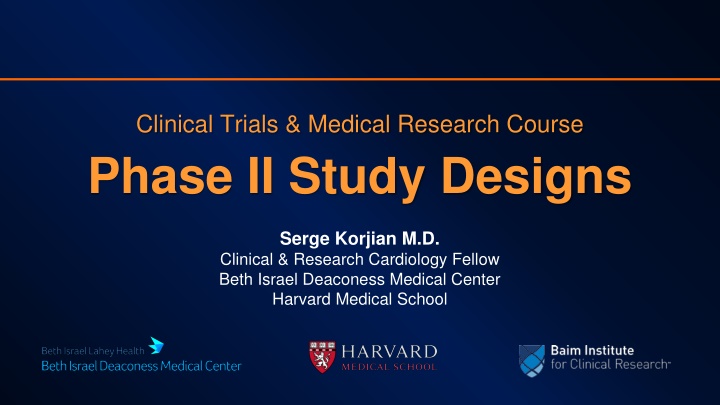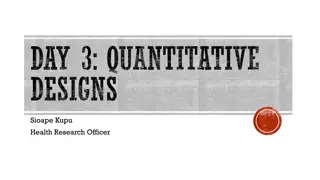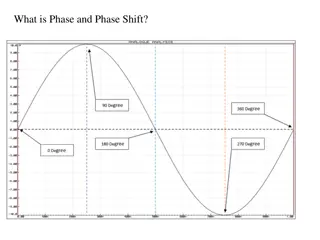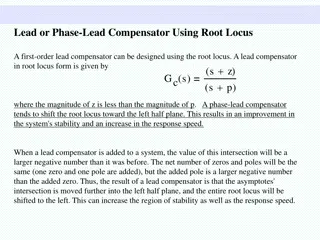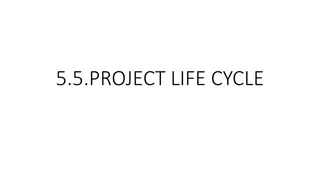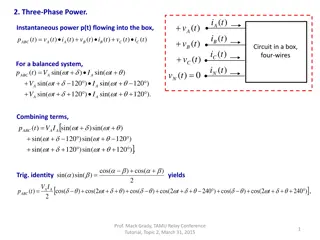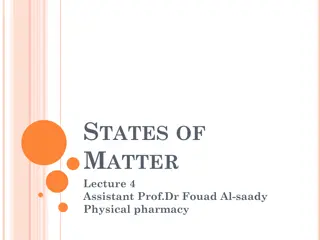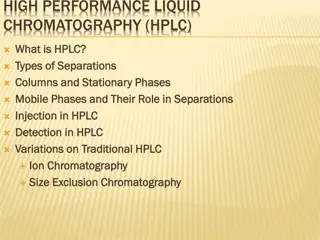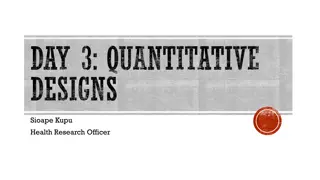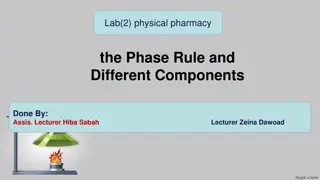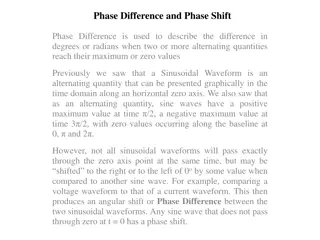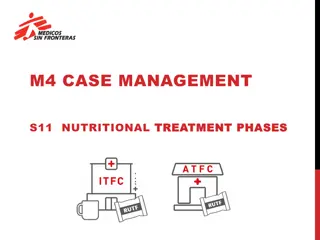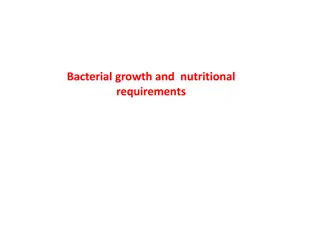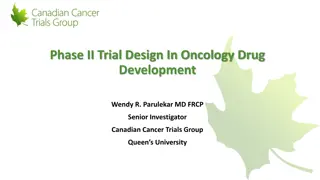Phase II Study Designs
Phase II trials play a crucial role in clinical research by investigating preliminary evidence of a drug or device's efficacy and monitoring safety in patients with a specific disease. These trials are essential as only a fraction of drugs proceed to phase III testing. Challenges include the need to identify safe and effective treatments and recruiting a suitable patient population. Design considerations encompass trial aim, hypothesis, comparator, randomization, outcome measures, and practical factors. Failures in phase II trials can be attributed to unknown toxic side effects, inadequate efficacy, and poor commercial viability. Strategies such as pilot studies help in preventing failures and optimizing trial design.
Download Presentation

Please find below an Image/Link to download the presentation.
The content on the website is provided AS IS for your information and personal use only. It may not be sold, licensed, or shared on other websites without obtaining consent from the author.If you encounter any issues during the download, it is possible that the publisher has removed the file from their server.
You are allowed to download the files provided on this website for personal or commercial use, subject to the condition that they are used lawfully. All files are the property of their respective owners.
The content on the website is provided AS IS for your information and personal use only. It may not be sold, licensed, or shared on other websites without obtaining consent from the author.
E N D
Presentation Transcript
Clinical Trials & Medical Research Course Phase II Study Designs Serge Korjian M.D. Clinical & Research Cardiology Fellow Beth Israel Deaconess Medical Center Harvard Medical School
Phase II Trials Main Purpose: Investigating for preliminary evidence of efficacy and continuing to monitor safety/side effects in patients with the disease of interest Only 30% of drugs/devices proceed to phase III testing.
Phase II Trials Phase IIa: Early phase trials, generally small in size N<100, often single arm, pilot studies/proof of concept, can help identify optimal dosing. Phase IIb: Later phase, studies designed to demonstrate clinical efficacy or biological activity, usually N<300,often randomized and placebo controlled, precursors to phase III trials
Challenges for Phase II Trials The main challenge for phase II trial design includes the need to identify drugs that are safe with sufficient activity for phase III testing. Phase II is usually the first time patients with the disease of interest are being recruited, which is a challenge by itself Given the small size of the trials, they may be underpowered to demonstrate efficacy if the treatment effect is small. Phase II studies in the CV space often rely on surrogate clinical or biochemical markers to provide data about outcomes
Designing a Phase II Trial: What Should We Consider Trial Aim & Hypothesis Therapeutic Considerations Comparator & Randomization ? Outcome of Interest and Outcome Measure Practical Considerations & Pilots Patient Population Trial Structure
Failures in Phase II Trials Previously unknown toxic side effects occur (50%) The trials show insufficient efficacy to treat the medical condition being tested (30%) 3. Commercial viability looks poor (15%)
Failures in Phase II Trials For CV Trials: ~45% due to poor efficacy ~25% are due to safety concerns
Preventing Failure: What Are Pilot Studies? A small-scale test of the methods and procedures to be used on a larger scale Not used to test hypotheses about the effects of an intervention, but rather, to assess the feasibility/acceptability of an approach to be used in a larger scale study. Should not be used for safety assessments either
Disambiguation Terms Proof-of-Concept (PoC) study Clinical trial carried out to determine if a treatment is biologically active or inactive Adaptive Trial Design with Pilot Design that allows modifications to be made to a trial's design or statistical procedures during its conduct with piloting rules
Feasibility in Pilot Studies Feasibility Questions Can I recruit my target population? Feasibility Measures Number screened per month; number enrolled per month; average time delay from screening to enrollment; average time to enroll enough participants to form classes (group-based interventions) Proportion of eligible screens who enroll; proportion of enrolled who attend at least one session Treatment-specific retention rates for study measures; reasons for dropouts Treatment-specific adherence rates to study protocol (in- person session attendance, homework, home sessions, etc.); treatment-specific competence measures Treatment-specific fidelity rates Proportion of planned assessments that are completed; duration of assessment visits; reasons for dropouts Acceptability ratings; qualitative assessments; reasons for dropouts; treatment-specific preference ratings (pre- and postintervention) Treatment-specific expectation of benefit ratings Can I randomize my target population? Can I keep participants in the study? Will participants do what they are asked to do? Can the treatment(s) be delivered per protocol? Are the assessments too burdensome? Are the treatment conditions acceptable to participants? Are the treatment conditions credible?
The Classical Single Arm Phase II The classical design for a Phase II trial is single- arm. A sample of individuals with the targeted medical condition is given the same experimental therapy and then followed over time to observe their response. Helpful design when patient pool is limited, natural history of the disease is well understood, placebo not ethical This is still heavily used in ID and oncology trials.
The Classical Single Arm Phase II Rarely used to determine efficacy, but rather identify an efficacy signal while continuing to evaluate safety.
The Classical Single Arm Phase II The Fleming 2-Stage Design Only for single arm studies Allows you to divide the trial into 2 stages and terminate early for futility or strongly positive result in the first stage. What You Need to Define: Type I error rate (?) Power Response probability of poor drug, p0 Response probability of good drug, p1 When you provide these numbers, the calculation will give you 1. the number of patients that require enrollment, 2. the number of patients to be enrolled in stage 1 for the interim analysis 3. the probability of success or failure at the time of the interim analysis based on outcomes
The Classical Single Arm Phase II Example: Cholesterol Agent What You Need to Define: Example Type I error rate (?) 0.05 (5%) Power 0.8 (80%) Response probability of poor drug, p0 0.05 (5%) Response probability of good drug, p1 0.15 (15%) How Does the Calculation Use These Numbers? Example The null hypothesis that the true response rate is [ p0] when P0 is <5% change in cholesterol using a novel agent. In the first stage, [ n1= 25 ] patients will be accrued (out of anticipated N = 60). If there are [ a1 = 1 ] or fewer responses in these [ n1] patients, the study will be stopped for futility. If there are [ b1 = 4 ] or more responses in [ n1] patients, the study will be stopped and the null hypothesis rejected. Otherwise, [ n - n1= 60 25 = ] additional patients will be accrued for a total of [ n ]. This design yields a type I error rate of [ 0.05 ] and power of [ 0.8 ] when the true response rate is [ p1= 15% ]
The Classical Single Arm Phase II The Fleming 2-Stage Design
The Classical Single Arm Phase II What Are the Limitations? Inability to distinguish between the effect of the treatment, a placebo effect, and the effect of natural history. Confounding due to effects of patient selection, trial eligibility, imaging techniques and assessment schedule, and treatment locations
New Age Phase II: Trials with Historical Controls & Randomized Trials Why change approach? With advances in available medical therapies, the conclusions drawn from single arm studies have become significantly more limited due to added confounding and significant shift in natural history of most diseases under standard of care therapy. The need to avoid expensive, large, futile, phase III trials. Solutions? Randomize subjects to two arms where placebo arm is control May be difficult if enrollment is slow and disease is not very prevalent Perform a single arm trial but compare results to historical controls Rather than showing a change within the population studies
Historical Controls Using historical controls is more statistically and economically efficient. It is important that these assumptions be met! Expected outcomes for standard of care have not changed over time Not only affected by new agents but also improvements in supportive care, earlier disease detection, differences in procedural performance, etc. Inter-institution variability in outcomes is not significant Most valid in procedural trials or for diseases that require advanced infrastructure for optimal management Risk and prognosis of historical controls is similar to patients enrolled If the risk profiles with regard to the outcome are different, the historical controls may underestimate or overestimate benefit
New Age Phase II: Why Randomized Trials? Ability to eliminate several biases and not terminate testing of a potentially promising agent too early Can allow for testing of multiple different regimens at the same time Feasible if population of interest is large enough to allow for acceptable time frame for recruitment Combined pilot study and proof-of-concept for Phase III trial
Selecting Patients for Phase II and Beyond Subject Selection Design Definition All-comer Design Screen all patients who have the disease of interest* Enrichment Design Can screen all patients, but only randomize certain patients who meet prespecified criteria based on level of biomarker, specific risk factors, or risk scores Adaptive Design If prespecified, may adjust enrichment parameters based on results of interim analysis * Does not mean that inclusion/exclusion criteria are not present, but it means that inclusion and exclusion criteria are not meant to identify patients at higher risk to develop outcome
Designing a Phase II Trial: What Should We Consider Trial Aim & Hypothesis Outcome of Interest and Outcome Measure Patient Population Therapeutic Considerations Comparator & Randomization Trial Structure Practical Considerations & Pilots ?
Take Home Messages The main challenge for phase II trial design includes the need to identify drugs that are safe with sufficient activity for phase III testing. Designs we historically single arm, but historical controls and randomized designs are gaining traction due to their advantages A piloty study is not used to test hypotheses about the effects of an intervention, but to assess the feasibility of an approach to be used in a larger scale study. Adaptive trial design allows for adjustment of modifications to be made to a trial's design or statistical procedures during its conduct
